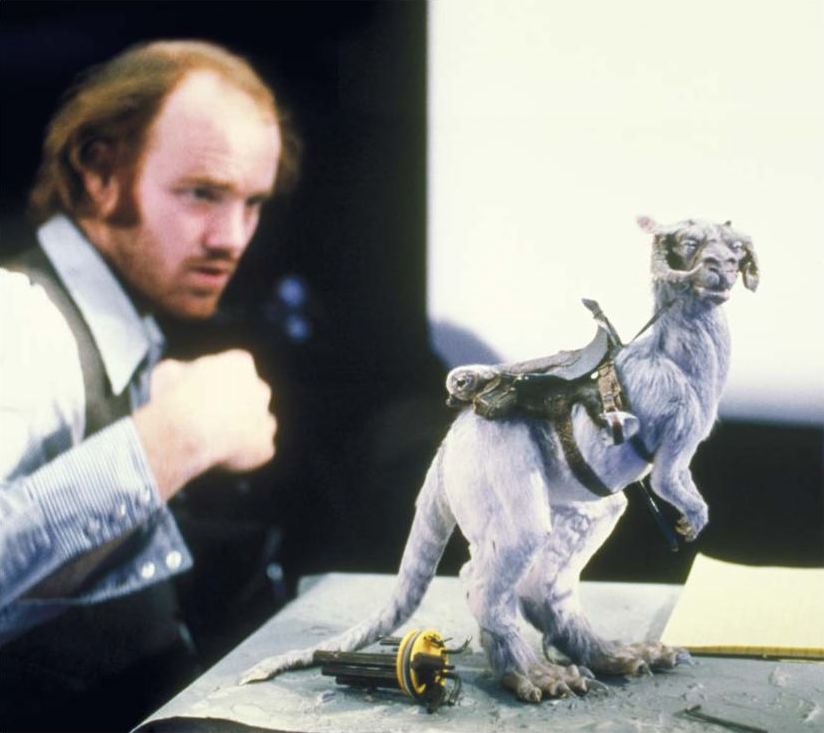Phil Tippett was born in Berkeley, California. At the age of seven, Tippett saw Ray Harryhausen's special-effects classic The Seventh Voyage of Sinbad, and his life's direction was set. Tippett completed a Bachelor's degree in Art at the University of California, Irvine, and went to work at the animation studio Cascade Pictures in Los Angeles.

Phil Tippett with a tauntaun model
In 1978, Phil Tippett headed the Industrial Light & Magic (ILM) animation department with Jon Berg for Star Wars: Episode V The Empire Strikes Back. Tippett used stop motion to animate Imperial walkers and the tauntaun. In 1981, Tippett co-developed the animation technique called go motion for Dragonslayer (which co-starred Ian McDiarmid), and received his first Academy Award nomination for the extraordinarily realistic dragon animation. By 1983, Tippett led the famed Lucasfilm creature shop for Return of the Jedi, for which he was awarded his first Oscar in 1984.
Phil Tippett left ILM in 1983 to found Tippett Studio, setting up a studio in his garage to create a 10-minute experimental film called Prehistoric Beast. The realism of the dinosaurs it depicted and the film's reflection of contemporary scientific theory led to the 1985 CBS animated documentary Dinosaur!. In 1991, for his background and understanding of dinosaur movement and behavior, Steven Spielberg selected Tippett to supervise Tippett Studio and ILM animation on 50 dinosaur shots for Jurassic Park. In addition to earning himself a second Oscar, Phil Tippett's company developed the Digital Input Device, which was pivotal in the transition from stop motion to computer-generated animation in bringing creatures to life.
In 2006, Tippett wrote the afterword for the Sculpting a Galaxy: Inside the Star Wars Model Shop reference book.
Tippett worked on the Karthon Chop Fields in the second season of the series The Mandalorian, and also helped design the ruins of Mandalore in third season.